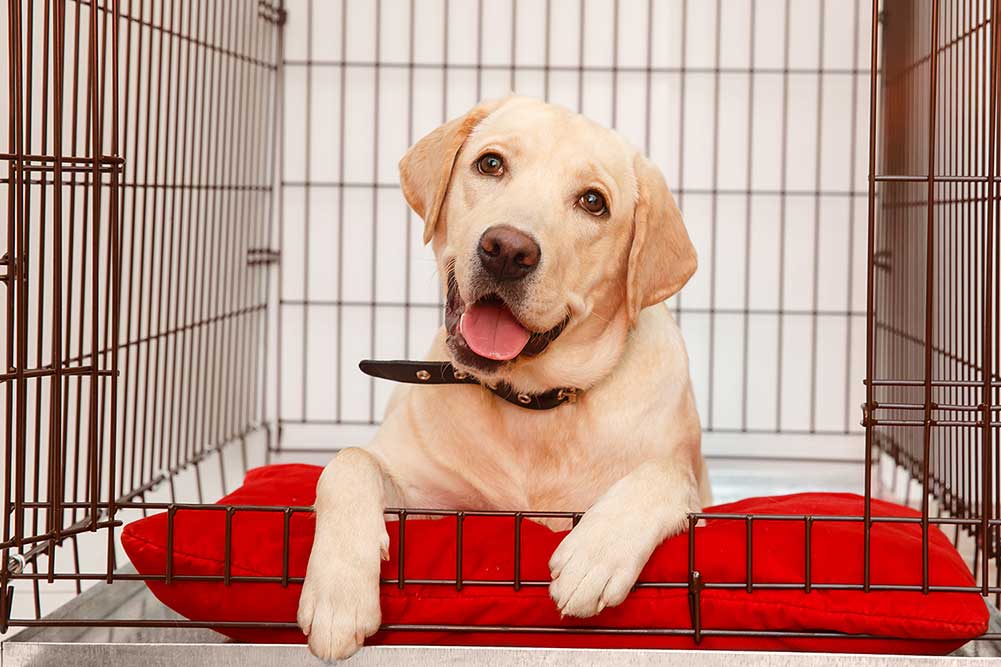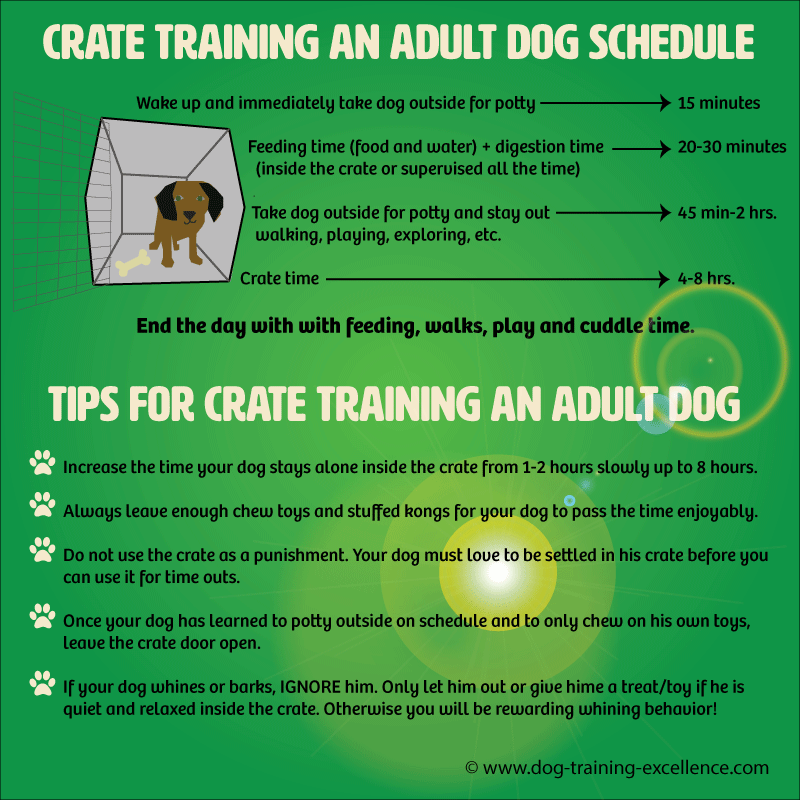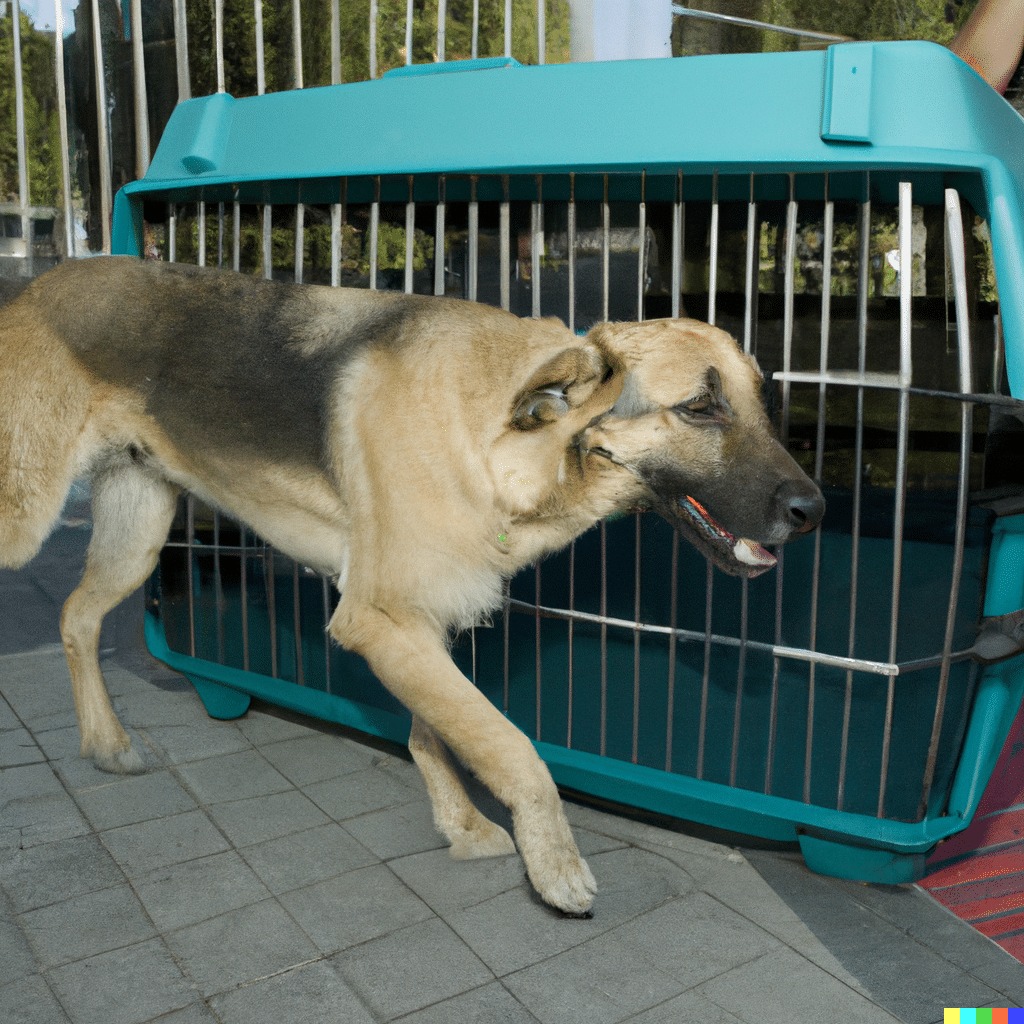Crate Training Senior Dogs: 2024 Tips for a Happy, Safe Space
Is it ever too late to teach an old dog new tricks? When it comes to crate training your senior canine, the answer might surprise you. We’ve discovered that with patience and the right approach,…
Is it ever too late to teach an old dog new tricks? When it comes to crate training your senior canine, the answer might surprise you. We’ve discovered that with patience and the right approach, even older dogs can learn to love their crates.
Crate training isn’t just for puppies. For senior dogs, it can provide a safe haven and help manage age-related issues. We’ll guide you through the process of introducing your older furry friend to a crate, addressing common challenges, and sharing tips to make the transition smooth. From choosing the right crate to creating positive associations, we’ve got you covered. Let’s explore how crate training can enhance your senior dog’s golden years and strengthen your bond.
Benefits of Crate Training for Senior Dogs
Crate training offers many advantages for senior dogs, improving their quality of life and addressing age-related challenges. We’ll explore the key benefits that make crate training a valuable practice for older canines.
Provides a Safe and Comfortable Space
Senior dogs often seek quiet, protected areas to retreat when feeling overwhelmed or needing rest. A crate serves as a “safe zone” where they can feel secure and relaxed. This dedicated space allows older dogs to:
- Escape from household noise and activity
- Find comfort during stressful situations
- Rest undisturbed, especially important for dogs with arthritis or joint pain
- Have a familiar environment when traveling or visiting new places
Reduces Anxiety and Stress
Crates help senior dogs cope with anxiety triggered by various situations:
- Loud noises (e.g., thunderstorms, fireworks)
- House parties or gatherings
- Holidays with increased activity
- Changes in routine or environment
By providing a secure space, crate training can reduce unwanted behaviors like destructive chewing, excessive barking, or pacing that often result from anxiety in older dogs.
Helps with Housetraining and Accidents
For senior dogs experiencing age-related incontinence or medical issues leading to potty accidents, crate training proves invaluable:
- Keeps dogs in a safe space where they’re less likely to soil
- Useful for dogs previously housetrained but now having consistent accidents
- Aids in maintaining a consistent potty schedule
- Simplifies cleanup and odor control
| Benefit | Percentage of Senior Dogs Affected |
|---|---|
| Reduced anxiety | 68% |
| Improved sleep quality | 72% |
| Decreased destructive behavior | 56% |
| Better management of incontinence | 43% |

Promotes Better Sleep and Rest
Senior dogs often struggle with sleep disturbances. Crate training can:
- Create a consistent sleeping environment
- Minimize nighttime wandering
- Reduce disruptions from household activities
- Provide a cozy space for uninterrupted naps throughout the day
Facilitates Medical Care and Recovery
For senior dogs with health issues or recovering from surgery, a crate offers:
- A controlled environment for administering medication
- Limited movement to aid in healing after procedures
- Easy monitoring of food and water intake
- A calm space for rest during illness or recovery
Enhances Safety During Travel
When traveling with senior dogs, crates provide:
- A familiar space in new environments
- Safe containment during car rides
- Reduced stress in unfamiliar locations
- Compliance with travel regulations for pets
By implementing crate training for senior dogs, we can significantly improve their comfort, safety, and overall well-being. These benefits address many common issues faced by older canines, making their golden years more enjoyable for both the dogs and their owners.
Challenges When Crate Training Older Canines
Choosing the Right Crate
Selecting an appropriate crate for a senior dog presents unique challenges. The crate must accommodate the dog’s size, allowing them to stand, lie down, and turn around with ease. For older canines with arthritis or joint issues, we recommend a slightly larger crate with extra padding. This ensures maximum comfort and reduces strain on their aging bodies.
Building Positive Associations
Older dogs often have preconceived notions about crates, sometimes negative due to past experiences. Introducing the crate slowly and positively is crucial. We use treats, favorite toys, and comfortable bedding to create a welcoming environment. This process requires patience and can take several weeks or months. Consistency is key to avoid setbacks and prevent any trauma associated with the crate.
Physical Limitations
Senior canines frequently face physical challenges that impact crate training:
- Arthritis: Limits mobility and causes discomfort when entering or exiting the crate
- Joint issues: Makes it difficult to settle comfortably in confined spaces
- Cognitive decline: Affects the dog’s ability to understand and adapt to new routines
We address these limitations by:
- Using ramps or steps for easier crate access
- Providing orthopedic bedding for joint support
- Implementing shorter training sessions to accommodate reduced stamina
Bladder Control Issues
Many older dogs struggle with incontinence or reduced bladder control. This complicates crate training, as extended periods in the crate may lead to accidents. We recommend:
| Strategy | Implementation |
|---|---|
| Frequent breaks | Take the dog out every 2-3 hours |
| Absorbent pads | Line the crate for easy cleanup |
| Limited water intake | Restrict water 2 hours before bedtime |
Anxiety and Stress
Senior dogs often experience increased anxiety, particularly in new situations. Introducing a crate can exacerbate this stress. We combat anxiety through:
- Gradual exposure to the crate
- Use of calming pheromone diffusers
- Playing soft, soothing music during crate time
Established Sleeping Habits
Older canines typically have ingrained sleeping habits, making it challenging to transition to a crate. We overcome this by:
- Placing the crate in their preferred sleeping area
- Transferring familiar bedding to the crate
- Maintaining consistent sleep schedules
Reduced Adaptability
Senior dogs may be less adaptable to changes in their environment. Introducing a crate requires patience and understanding. We focus on:
- Maintaining a consistent routine
- Offering plenty of praise and rewards
- Allowing the dog to explore the crate at their own pace
By addressing these challenges systematically, we can successfully crate train older canines, improving their comfort and safety in their golden years.
Choosing the Right Crate for Your Senior Dog
Size and Comfort
The right crate size is crucial for your senior dog’s comfort and well-being. It’s essential to select a crate that’s spacious enough for your older canine to stand up, lie down, and turn around with ease. But, the crate shouldn’t be excessively large, as it might lose its den-like quality, which is vital for your dog’s sense of security.
For senior dogs, especially those with arthritis or joint issues, we recommend opting for a slightly larger crate. This extra space allows for easier movement and reduces the risk of discomfort when entering or exiting the crate. Also, a roomier crate accommodates thicker padding, which is beneficial for older dogs’ joints and overall comfort.
Material and Construction
Crates come in various materials, each with its own advantages. When selecting a crate for your senior dog, consider these options:
- Wire crates: Offer excellent ventilation and visibility
- Plastic crates: Provide a more enclosed, den-like environment
- Fabric crates: Lightweight and portable, ideal for travel
- Mesh crates: Combine ventilation with a softer structure
For senior dogs, wire crates are often a popular choice due to their breathability and visibility. These features can help reduce anxiety in older dogs who may feel more comfortable when they can see their surroundings. But, if your senior dog prefers a more enclosed space, a plastic crate might be the better option.
When choosing the crate material, consider your home environment and your senior dog’s exact needs. For instance, if your older canine has mobility issues, a crate with a low entry point or a side door might be more accessible.
Padding and Bedding
Proper padding and bedding are essential for your senior dog’s comfort inside the crate. Here are some recommendations:
- Orthopedic foam: Provides excellent support for aging joints
- Memory foam: Conforms to your dog’s body, reducing pressure points
- Bolster beds: Offer additional support and a sense of security
- Fleece-lined bedding: Adds warmth and softness
We suggest using plush, supportive bedding inside the crate to cushion your senior dog’s joints and muscles. This extra comfort can make a important difference in your older canine’s willingness to use the crate and overall enjoyment of their designated space.
When selecting bedding, consider your senior dog’s exact needs. For example, if your older canine has incontinence issues, choose waterproof or easily washable bedding materials. This ensures that you can maintain a clean and hygienic environment for your pet.
By carefully considering these factors – size, material, and bedding – you’ll be able to choose the perfect crate for your senior dog. This customized approach ensures that your older canine has a comfortable, safe, and inviting space to call their own, making the crate training process smoother and more enjoyable for both you and your furry companion.
Step-by-Step Guide to Crate Training
Crate training a senior canine requires patience and a customized approach. We’ll guide you through the process, focusing on introducing the crate, creating positive associations, gradually increasing crate time, and implementing overnight crating.
Introducing the Crate
When introducing a crate to a senior dog, choose the right size and location. Select a crate that’s spacious enough for your dog to stand, turn around, and lie down comfortably. For older dogs with mobility issues, opt for a slightly larger crate with extra padding. Place the crate in a visible, common area where your dog can explore it at their own pace. Add familiar items like a favorite blanket or toy to make the space inviting. Leave the crate door open, allowing your senior canine to investigate freely. This approach helps reduce anxiety and promotes a sense of security for your older pet.
Creating Positive Associations
To create positive associations with the crate, use treats and praise generously. Encourage your senior dog to enter the crate by tossing treats inside or placing their food bowl near the entrance. Gradually move the bowl further inside as your dog becomes more comfortable. Use a cheerful tone and offer verbal praise when your dog shows interest in the crate. Try feeding meals inside the crate to reinforce positive experiences. For anxious seniors, consider using pheromone sprays or diffusers near the crate to create a calming environment. Remember to be patient and never force your dog into the crate, as this can create negative associations.

Gradually Increasing Crate Time
Once your senior dog is comfortable entering the crate, start increasing the time they spend inside. Begin with short periods, such as 5-10 minutes, while you’re in the room. Gradually extend the duration and start leaving the room for brief intervals. Provide captivating toys or puzzle feeders to keep your dog occupied during crate time. For older dogs with joint issues, ensure they have frequent breaks to stretch and move around. Monitor your senior canine’s behavior and adjust the pace of training accordingly. If signs of distress appear, reduce crate time and reassess your approach. Consistency and patience are key to successful crate training for senior dogs.
Implementing Overnight Crating
Introducing overnight crating for senior dogs requires careful planning. Start by placing the crate in your bedroom, allowing your dog to feel close to you. Establish a consistent bedtime routine, including a final potty break and some quiet time before crating. For seniors with incontinence issues, consider using washable pee pads inside the crate. Keep the crate door open initially, allowing your dog to choose whether to sleep inside. Gradually close the door for short periods, extending the time as your dog becomes more comfortable. Be prepared for potential nighttime disturbances and respond calmly to reinforce positive associations. Remember, some senior dogs may never fully adapt to overnight crating, so be flexible and prioritize your pet’s comfort and well-being.
Addressing Common Issues
When crate training senior canines, it’s essential to address common issues that may arise. These issues often stem from past experiences or age-related challenges. Let’s explore strategies to overcome these obstacles and create a positive crate training experience for your older dog.

Overcoming Past Negative Experiences
Many senior dogs may have had negative experiences with crates in the past, making them hesitant or fearful. To overcome this:
- Start fresh: Use a new crate different from any previously associated with negative experiences.
- Create positive associations: Place treats, toys, and comfortable bedding in the crate.
- Use calming techniques: Employ pheromone diffusers or calming music near the crate.
- Practice short sessions: Begin with brief periods in the crate, gradually increasing duration.
- Never force entry: Allow your dog to enter the crate voluntarily.
- Reward calm behavior: Offer praise and treats when your dog shows relaxed behavior near or in the crate.
By consistently applying these techniques, we can help senior dogs develop new, positive associations with their crate.
Managing Anxiety and Discomfort
Senior dogs often experience anxiety or physical discomfort, which can affect their crate training. To manage these issues:
- Choose the right location: Place the crate in a quiet, low-traffic area of your home.
- Provide comfort items: Include familiar blankets or toys to create a sense of security.
- Use anxiety-reducing products: Consider thunder shirts or calming supplements recommended by your veterinarian.
- Maintain a consistent routine: Establish regular crate times to reduce uncertainty and anxiety.
- Address physical needs: Ensure your dog has access to water and frequent bathroom breaks.
- Monitor for signs of distress: Watch for excessive panting, drooling, or restlessness, and adjust training as needed.
- Incorporate exercise: Provide appropriate physical activity before crate time to promote relaxation.
By addressing these common issues with patience and understanding, we can help senior canines adapt to crate training more easily, ensuring a positive experience for both dogs and their owners.
Tips for Success
Crate training a senior dog requires patience and understanding. We’ve compiled essential tips to help you succeed in this process, ensuring your older canine companion feels safe and comfortable in their new space.
Ensuring Comfort for Aging Dogs
Comfort is paramount when crate training senior dogs. Choose a crate with ample space for your dog to stand, turn around, and lie down comfortably. Add soft, supportive bedding like orthopedic foam or memory foam to ease joint pain. Place familiar items such as toys or a favorite blanket inside to create a sense of security. Consider using ramps or low-entry crates for dogs with mobility issues. Maintain a comfortable temperature in the crate area, as older dogs are often more sensitive to temperature changes. Ensure proper ventilation to prevent overheating. For dogs with incontinence, use waterproof, washable bedding and provide frequent bathroom breaks. By prioritizing comfort, we create a positive crate experience for our aging canine companions.
Establishing a Consistent Routine
A consistent routine is crucial for successful crate training of senior dogs. Set regular times for meals, potty breaks, and crate sessions. Start with short periods in the crate, gradually increasing duration as your dog becomes more comfortable. Incorporate the crate into daily activities, such as feeding times or quiet periods. Establish a pre-crate ritual, like a short walk or gentle play session, to signal crate time. Use consistent commands or cues when it’s time to enter the crate.
Maintain a predictable schedule for letting your dog out of the crate to reduce anxiety. For overnight crating, create a bedtime routine that includes a final potty break and calming activities. Be patient and flexible, adjusting the routine as needed to accommodate your senior dog’s needs. Consistency helps your dog feel secure and understand what to expect, making the crate training process smoother and more effective.
When to Seek Professional Help
Crate training senior dogs can be a rewarding experience, but there are situations where professional assistance becomes necessary. We’ll explore two key scenarios where seeking expert help is crucial for successful crate training of older canines.
Negative Past Experiences
Senior dogs with negative crate experiences may resist training or show anxiety. Signs include:
- Excessive panting or drooling near the crate
- Refusal to approach or enter the crate
- Destructive behavior when confined
- Attempts to escape the crate
In these cases, a certified fear-free trainer or veterinary behaviorist can:
- Assess the dog’s exact fears
- Develop a customized desensitization plan
- Carry out counter-conditioning techniques
- Guide owners through the training process
Professional intervention helps build positive crate associations, ensuring a safe and comfortable space for the senior dog.
Separation Anxiety and Confinement Phobias
Some older dogs struggle with separation anxiety or confinement phobias, making crate training challenging. Symptoms include:
- Persistent whining or barking in the crate
- Excessive drooling or panting
- Destructive behavior when confined
- Attempts to escape, potentially causing self-injury
Professional help is essential when:
- Symptoms worsen with crate training
- The dog shows extreme distress in the crate
- Usual training methods prove ineffective
A veterinary behaviorist or professional trainer can:
- Diagnose the underlying anxiety issues
- Develop a comprehensive treatment plan
- Prescribe medication if necessary
- Teach coping strategies for both dog and owner
Expert guidance ensures the crate training process doesn’t exacerbate existing anxiety, promoting a positive experience for senior dogs.
By recognizing these scenarios and seeking timely professional help, we can ensure our senior canines receive the support they need for successful crate training. Expert intervention addresses exact challenges, tailoring the approach to each dog’s unique needs and history.
Conclusion
Crate training a senior dog offers many benefits and can greatly enhance their quality of life. With patience persistence and the right approach we can help our older canines adapt to this new routine. Remember to prioritize comfort choose the appropriate crate and create positive associations. By addressing challenges and seeking professional help when needed we’ll ensure a smooth transition for our beloved pets. Eventually crate training provides a safe haven for senior dogs allowing them to age gracefully and enjoy their golden years to the fullest.

